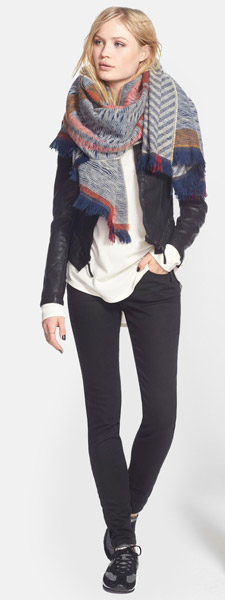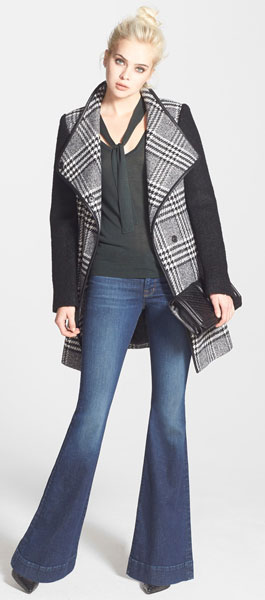I’ve posted many a tip and trick about footwear over the years. I’ve summarized the most practical ones below for easy reference. Follow the link on each title for more detail.
- Save your feet with heel cups and cushions: The heel cushion or cup lifts the back of the foot, preventing the uncomfortable rubbing and blisters caused by closed shoes like loafers, sneakers, flats and pumps. Heel cushions or cups can also reduce rubbing in ankle strap shoes by changing the position of the strap on the ankle.
- Wear no-show socks or nude knee-highs with cropped jeans: Cropped pants and boyfriend jeans that are rolled at the hem often look best without socks. But since wearing socks is more comfortable and insulating, wear no-show ankle socks, footies or nude-for-you knee highs to fake the barefoot look.
- Transition your feet into Summer with a pedicure and shorter sandal wears: Pedicures keep your foot skin and toenails healthy, as well as toughening up your feet. And break in your Summer sandals slowly so that your feet get used to wearing the style all over again.
- Clean light footwear with moist wipes, a magic eraser, or nail polish remover: Moist wipes remove grime a lot more successfully than you might expect. Light-coloured suede shoes are best cleaned with a moist magic eraser. And nail polish remover is particularly effective at removing black marks on white or light leather.
- Repair scuffed black footwear with a sharpie pen: The result isn’t perfect but it can take the edge off the scuff marks by making them darker and less noticeable.
- Order narrow size sandals for low volume feet: Failing that, size down half a size in regular sandals to fit a narrow foot. Also, choose design details like smaller peep-toes, closed toes and open backs, more vamp coverage and ankle straps, to help secure the sandals to the foot.
- Switch out your footwear after the commute: Don’t let rain, snow, slush or a long walk to and from work ruin your style. Wear comfy and sensible footwear on your commute and change into the right shoes for your outfit once you’ve reached your destination.
- Weatherproof suede and leather with weatherproofing spray: Weatherproofing spray will not waterproof your shoes, but it will make them more resistant to damp weather and stains. It’s especially effective on delicate suede.
- Stretch footwear with a shoe stretching kit or with ice: Get a shoe stretching kit, which uses spray and shoe horns to stretch certain areas of the shoe. Or fill two plastic ziplock bags with water. Place the bags of water in each of the shoes and freeze them. After a day or two, allow the ice to thaw and remove the bags. Voila. Stretched shoes.
- Stretch the toebox of your shoes with potatoes: Place a spud in the opening of the shoe and push it in hard and tight. Leave it in there for a couple of days to stretch the toebox. This method works best with soft leather.
- Stretch your shoes with wet feet: This is my favourite shoe stretching technique because it stretches the shoe all over. The trick is to wet your feet, put on the shoes and walk around in them for an hour or two. It’s a little squelchy but you get used to it. Walk around at home, or take them out for a spin. Repeat the process a few times and you’ll find that the leather stretches over time and molds to the shape of your feet.
- Bodyglide prevents blisters: Bodyglide is an anti-chafing balm that you can rub quite liberally onto the areas of your feet that are blister-prone before putting on your shoes. Reapply after four or five hours if necessary. It’s a miracle balm for my own feet.
- Six footwear travelling tips: Resist the temptation to take brand new shoes — broken in footwear only. Pack multiple pairs so that you have backup in case something happens to your shoes or feet along the way. Travel in your bulkiest shoes to save suitcase space. Build your travel capsule from the footwear up so that you don’t compromise on comfort and outfit styling. Take the dressy shoes for the dressy outfit, and use Bodyglide.
- Wear your socks inside out to prevent the seams from rubbing: That way the fabric around your toes is smooth. No ridge seam means less rubbing.
- Prevent heel slippage in boots by adding inserts under the footbed of the shoe: The inserts close the gap between your heel and the footbed by taking up some of the space. This is especially effective for wide feet with narrow heels.
Feel free to add to the list in the comments below.











